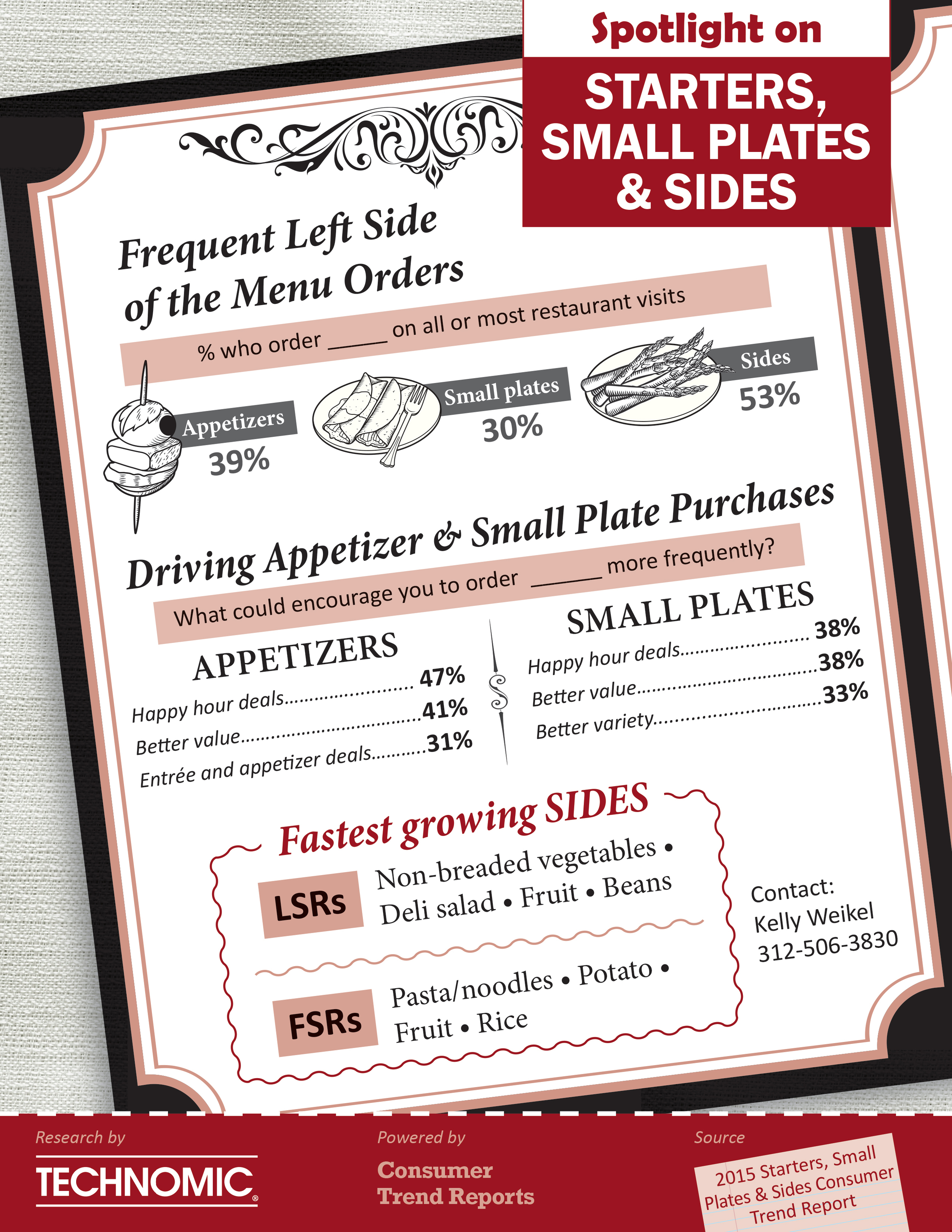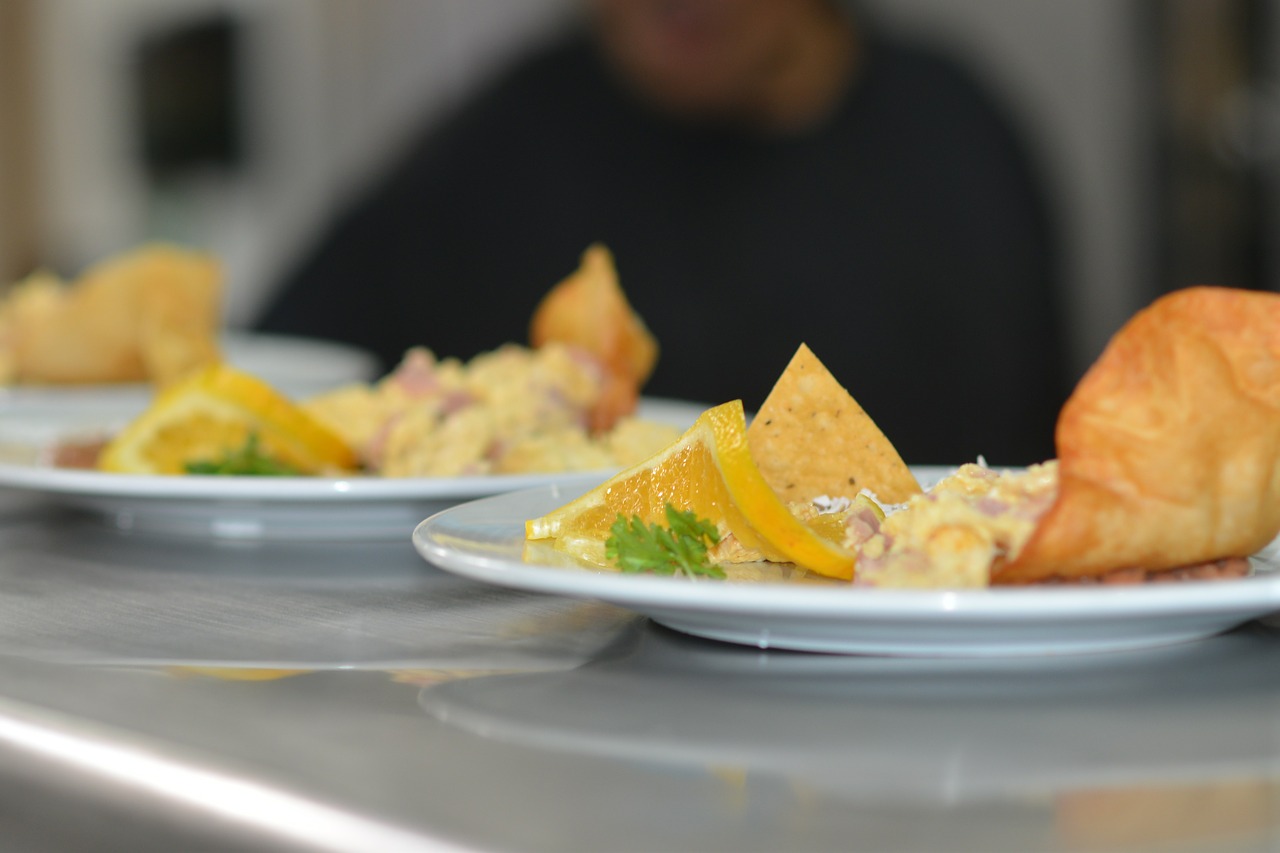Small Plates Will Continue to Rise in Popularity, Replacing Traditional Mealparts
/

CHICAGO, Oct. 8, 2015 /PRNewswire/ -- Though some foodservice consumers still view the left side of the menu (LSM)—particularly starters, small plates and sides—as "extras," the LSM is uniquely positioned to serve consumers' shifting dining needs. According to Technomic's Starters, Small Plates & Sides Consumer Trend Report, the LSM offers incomparable opportunities for personalization, socialization and flavor experimentation, providing fun, unique and memorable experiences both during and between traditional mealtimes.
Find more starters, small plates and sides insights here.
"As diners become increasingly adventurous, the LSM is a place for operators to stand out by featuring unique, signature and bold flavors that cater to demands for customization," explains Kelly Weikel, Technomic director of consumer insights. "Allowing consumers to express themselves through low-risk experimentation creates a 'connection' with a restaurant. Modular pick-and-choose menus are an area of opportunity: both consumption and menu presence of small plates, for example, has increased since 2013, and interest in these versatile offerings shows no signs of waning."

Compiling findings from more than 1,500 U.S. consumers, as well as Technomic's MenuMonitor, Digital Resource Library and Top 500 Chain Restaurant Report, the Starters, Small Plates & Sides Consumer Trend Report also reveals:
- 53 percent of consumers order sides, 39 percent order appetizers and 30 percent order small plates on all or most of their restaurant visits;
- Nearly half of consumers (47 percent) say that happy hour deals would encourage them to order appetizers more frequently;
- The fastest growing sides include non-breaded vegetables, deli salads, fruit and beans at limited-service restaurants and pasta/noodles, other potato (au gratin, hash browns, home fries, tater tots, etc.), fruit and rice at full-service restaurants.
The Technomic Starters, Small Plates & Sides Consumer Trend Report is one of 12 topics in our 2015 Consumer Trend Report series, offering the most current analysis, insight and opportunities to help grow your business. Our best-in-class intelligence combines 50 years of foodservice expertise with critical findings from over 7,000 menus per year and nearly 30,000 annual consumer interviews.
Technomic publishes a complete library of Consumer Trend Reports. To learn more, please visit Technomic.com or contact one of the individuals listed below. For Technomic updates, please follow us on Twitter, LinkedIn or our blog.
(via PR Newswire)





